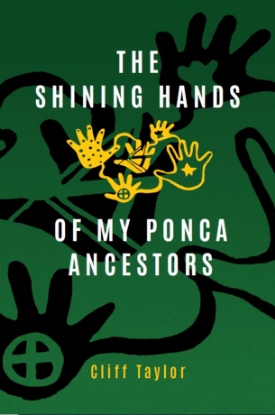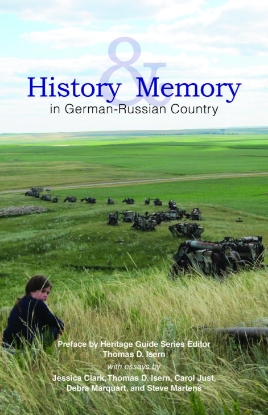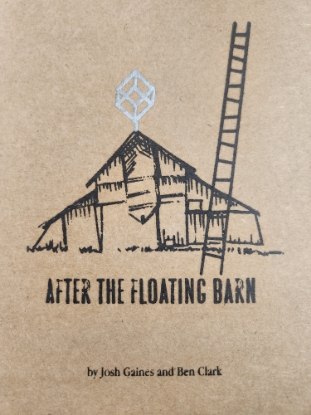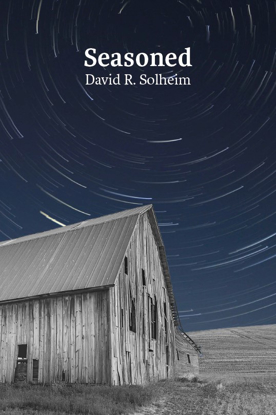New Titles
The Shining Hands of My Ponca Ancestors
In sincere, from-the-heart storytelling, The Shining Hands of My Ponca Ancestors depicts the life of a young, contemporary Ponca, who—with the help of friends, relatives, spirits, and ancestors—is learning what is really possible for him and his tribe and how dramatically different that is from the dominant cultural messaging of his youth. An account of inspiration, ancestor intervention, the indestructible Indigenous core of his Native people, and the immense beauty of an ongoing way of life, Shining Hands is rife with meaning for Native and non-Native readers alike. Viewed through his personal life, Shining Hands is a prayer for the young that they may see their own powerful potential, too.
History & Memory in German-Russian Country
The Germans from Russia—an agricultural people who settled, survived, and prospered—formed strong ethnic communities where farmers still plant and harvest, the faithful still gather for worship, and the cooks still feed their families from the garden. This is a story of German-Russian persistence on the northern plains and its emergent consciousness—a sort of heritage husbandry—in the late twentieth century.
After the Floating Barn
Winner of the 2025 Poetry of the Plains & Prairies (POPP) Award
Volume 10 of the POPP Award Series
This collection of poems is a narrative, a folk tale, a ghost story, and a loose, speculative history of a strange few acres of land in Nebraska called Art Farm. We wrote it during a two-month-long artists’ residency in 2017.
This book began as a sort of reply to an unpublished chapbook by Ben Clark and GennaRose Nethercott called, Dear Fox, Dear Barn. In that book, The Barn is a character. We began to dissect how the land of Art Farm Nebraska and its inhabitants interacted around that character. On the farm there are multiple structures in a constant state of renewal and decay. Throughout the summer and fall people live and work there, rebuilding and creating. In the winter the weather takes over. The raccoons take over. The ghosts come back. The story goes, sometime in the early 2000s, what would become The Floating Barn was being moved from another farm on huge steel I-beams. When they reached Art Farm, the barn started to shift. Instead of risking further damage they stopped moving and built a trailer-high post foundation beneath the I-beams and reinforced the damaged areas. The building seemed to float there above the prairie, dropping shingles and wall sections until it finally collapsed in a 2018 winter storm. One other structure mentioned directly in our book is a farmhouse built around 1910. Ben and I lived in that house with the mice and mosquitos and attic raccoons for two months. It was amazing.
Forgotten Frequencies
THE FIRST FORTY CUSTOMERS TO ORDER THIS TITLE FROM OUR ONLINE STORE WILL RECEIVE AN AUTOGRAPHED, LETTERPRESS PRINTED CARD FEATURING THE POEM "DECEMBER" FROM THIS COLLECTION.
Winner of the 2023 Poetry of the Plains & Prairies (POPP) Award
Volume 8 of the POPP Award Series
From the author:
I began writing Forgotten Frequencies while working as a country radio broadcaster in my hometown of Montevideo, Minnesota. During this time, I began to conceive of the poetic imagination as a kind of underground radio station of the soul, hosted by the muses. When I am lucky enough to catch the signal, I hear hymns and folk songs and sonnets, sounds of ancient glacial rivers, messages from fields, and voices from this region’s past. This book is a record of my attempts to transcribe this staticky inner music.
Brendan Stermer is a poet from Montevideo, Minnesota. His work is influenced by the rich literary and artistic tradition of the Upper Midwest. He is also the host and producer of Interesting People Reading Poetry, a podcast where artists and luminaries read a favorite poem and share what it means t them. He currently lives in East Grand Forks, Minnesota, and works as a writer exploring rural health issues across the country.
ISBN: 978-1-946163-62-2
Page count: 40
Picture Count: 2
Paperback, stitched
Publication Date: December 12, 2023
Seasoned
It seems that everyday life is dotted with moments that one wants to remember and share. When the circumstances and situations of my life provide me such moments, I try to make notes or a rough draft of a poem as soon as possible. Such events might be coffee with a friend, a walk around a park, a weekend camping trip, cleaning the house, a family celebration, or vacation travel. Sometimes I read, hear, overhear, or glimpse similar events of other people. In those cases, I imagine the cause or result of a situation of which I don’t have actual knowledge. After a period of informal meditation (usually days or weeks, but sometimes years) I revise the draft into a poem to share my experience, insight, discovery, or surprise. My lifelong goal as a writer is to have my readers, at least for a moment, perceive something as closely as possible to the way I perceived it. This collection of my recent work features the perceptions of a post-retirement guy paying attention to the current events of his life and times, and often commenting on his discoveries of how he and the world have changed through the seasons of the seventy-some years of his existence.
Available early December 2023
David R. Solheim, the North Dakota Statehood Centennial Poet, has published writing in more than two dozen periodicals and had work in several anthologies. He wrote two poetry chapbooks published by Dacotah Territory. His four previous books of poetry and a literary travelog related to Thoreau’s 1861 visit to Minnesota are available via buffalocommonspress.com. Solheim is an English Professor Emeritus of Dickinson State University, where he taught for almost 30 years, and, thanks to the late Larry Woiwode, an Emeritus Associate Poet Laureate of North Dakota. He holds degrees in English and creative writing from Gustavus Adolphus College, Stanford University, and the University of Denver. Early in his career, he was a temporary faculty member at NDSU and conducted numerous programs for the North Dakota Humanities Council (now Humanities North Dakota) and the ND Council on the Arts. After residing in Minnesota for the last 10 years, he and his wife, Dr. Barbara Laman, also an Emeritus English Professor of DSU, have resettled near family members in the Portland, Oregon, area. Between them, Dave and Barbara have five adult children and seven grandchildren.
ISBN: 978-1-946163-52-3
Page Count: 78
Paperback
Publication Year: 2023




























